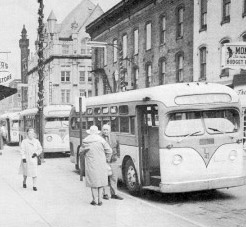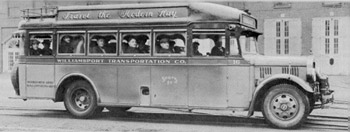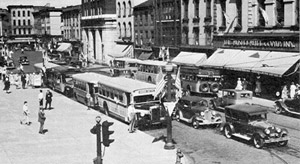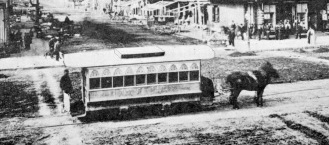The bus company’s low-profit margin prohibited the purchase of any new vehicles, and only an excellent maintenance program kept the old buses running. The worsening condition of the entire system prompted the Central Lycoming Planning Commission to evaluate the future of the company. Their studies indicated the need for a
Timeline Stories

Privately Owned System Declines
By 1954, privately owned public transportation systems across the country were beginning to feel the pressure of competing with the automobile. As the number of cars and highways grew, attitudes toward mass transportation rapidly changed, especially in small urban areas such as Williamsport. Rising bus fares and reduced schedules added

Bus Service Begins
The new bus service officially started service at 5:30 a.m. on June 11. Buses were now Williamsport’s principal form of public transportation. Bush established headquarters for the Williamsport Transportation Company at the former Rothfuss garage on East Third and Penn Streets. This building housed the company’s management offices, a maintenance

The End of an Era
There were few extensions of trolley service after the late 1890’s, the only major one being the Cemetery Line which opened for service May 10, 1908 and which ran from the intersection of Park and Campbell to the Wildwood Cemetery gate. The rolling stock was continually upgraded though, and in

The Streetcar Era
In the city of Williamsport itself, there was great growth and prosperity in the mid-1800’s. These were the days of the Lumber Boom, and throughout the nation Williamsport was known as a town of millionaires. These millionaires, in an expression of civic pride and ambition, provided the funds and impetus

Early Forms of Transit
Settlers began coming to the Williamsport area in the mid-1700’s. They came either by flat boats poled upstream or by foot and pack horses over narrow Indian paths. Later, after 1772 when construction of several roads had begun, the settlers were able to use wagons.


